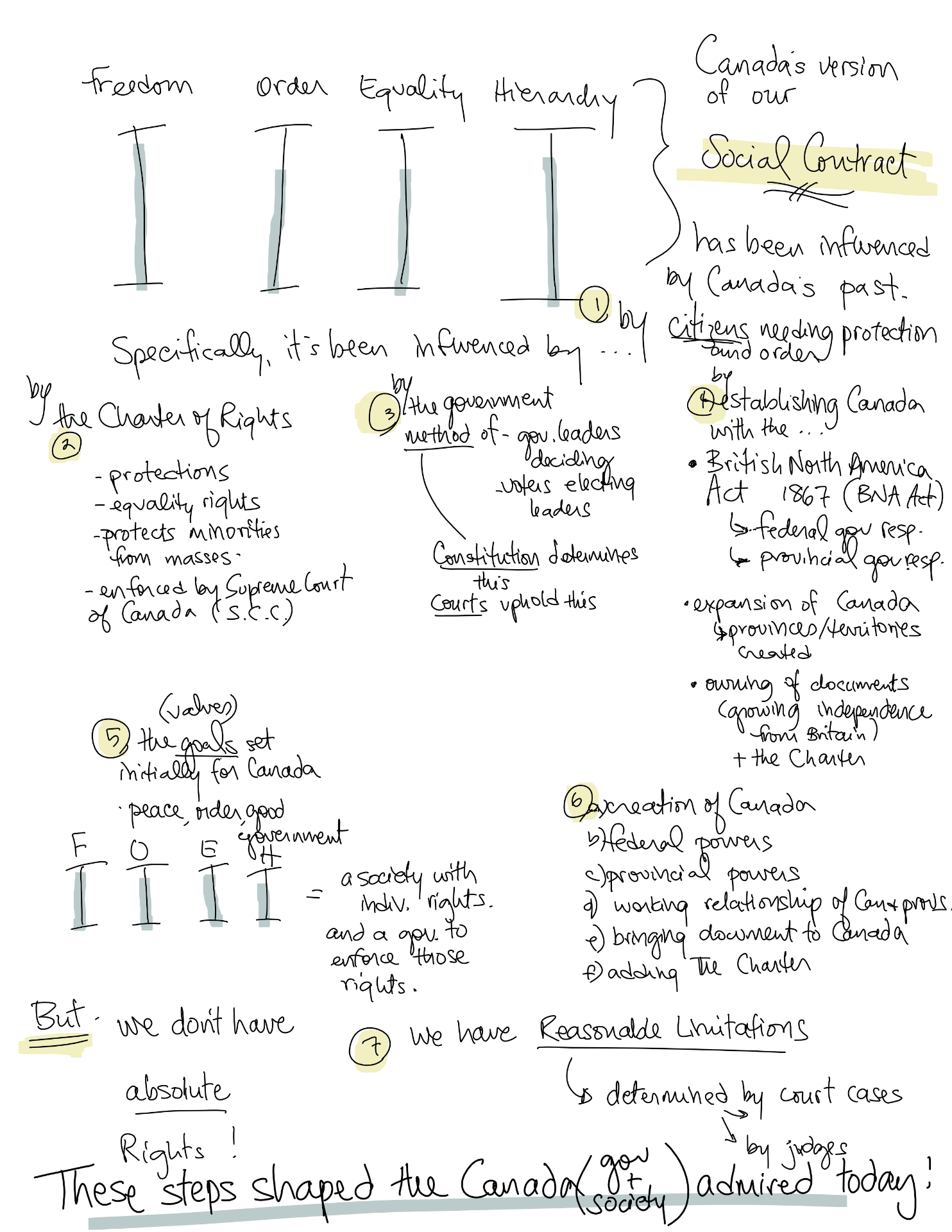Social 10 Balance of Rights/Freedoms – Confederation
.
Canada is considered one of the best societies in the world with high quality of living. Part of that measurement is because there are strong individual rights protected by law in Canada. Their source is Canada’s Charter of Rights and Freedoms. This section explores that and what it means to Canadians.
- These rights apply to Canadian citizens, including people with Permanent Resident status. They only lack two “Rights” other Canadians enjoy.
- The Charter of Rights and Freedoms set out the protections for individuals, but as society changes and our needs so do the laws supporting those protections. The Supreme Court of Canada is the final say for laws in Canada.
- Example: Ban on Sikh kirpan overturned by Supreme Court
- Example: The 1999 Supreme Court of Canada decision giving Nova Scotia Mikmaq peoples their right to fish for a “moderate livelihood” outside of the fishing season.
- Decision-making power in any country is of primary importance. Who gets that power, how they use it, who is excluded from it: these are all important characteristics that can change what a society looks like. Canada’s Constitution document establishes that process and levels of power for decision-makers.
- Example: If a single dictator makes all decisions, it is a very different type of society as a result, than if every citizens has a part in the decision-making power, like we do in Canada.
- Example: Court cases are heard at the different levels, all the way up to the Supreme Court of Canada. They make legal decisions that affect the law as it’s applied for all Canadians.
- How is power divided in Canada? By the Canadian Constitution document that first established Canada as a country.
-
- It was first made and named the British North America Act of 1867 (after the British defeated the outnumbered French troops in New France, the area first settled in Canada).
- Initially Canada was only made of four provinces
- The rest of the land within Canada’s current landmass was held as colonies by the British. Parts of Canada were added to Canada as provinces and territories over time.
- The decision-making power was held in Canada by government, but was still under the responsibility and authority of the British Crown, as part of the British colonies.
- Canada was later given freedom from the colonies, becoming truly its own country, with autonomy (its own decision-making control).
- An essential part of the original BNA Act are two Sections of the document which divide the decision-making responsibilities of the Federal (country-wide) and Provincial (regional) governments.
- Section 91 – Federal responsibilities
- Section 92 – Provincial responsibilities
- The British North America Act was later amended to be called the Constitution Act of 1982 in a big ceremony where the Queen of England came to Canada and brought with her the original BNA document that established Canada’s beginnings.
- Now a complete country made up of many provinces and territories, the federal Canadian government and provincial leaders negotiated an adjustment to the new document that would define how Canada as a country and society would function.
- A big part or change in that document was the creation/inclusion of the Charter of Rights and Freedoms.
- Top Five Charter Facts You May Not Know infographic
-
- Peace, Order and Good Government: a set of values
- The values Canadian laws were built on were different than the values American laws were built on. From their very early beginnings, the two neighbouring countries with similar pasts were already heading in different directions, which 150 years later results in two countries that are quite different to live in.
- Canada’s value goals: peace, order, and good government
- America’s value goals: life, liberty, and pursuit of happiness
- The values Canadian laws were built on were different than the values American laws were built on. From their very early beginnings, the two neighbouring countries with similar pasts were already heading in different directions, which 150 years later results in two countries that are quite different to live in.
- Review: The steps that got us to this place, this type of society and social contract?
- BNA Act creates Canada
- Powers set out for Federal (Canadian) government
- Powers set out for Provincial (Sask, BC, Manitoba, etc) government
- Relationship develops between Canada and its provinces/territories
- Bringing home the Constitution document – a British law becomes Canadian-owned
- Adding the Canadian Charter of Rights.
- Not Absolute Rights: Reasonable Limitations of our Charter Rights
- It’s well known Canadians have protected rights because of the Charter, but not a lot of people understand those rights aren’t absolute rights.
- Your rights end when another person’s rights begin.
- Slideplayer: Canadian Rights are not Absolute Rights
- Example of Balance of Rights: 12 year old boy given authority to wear his sikh kerpan
- Example: Quebec’s reasonable/temporary restriction on religious restrictions
- Example: Keegstra’s reasonable limitation on his freedom of expression
- Example: New Brunswick uses Notwithstanding Clause to force vaccinations of students attending schools
https://prezi.com/ls5ixydydu30/section-one-of-the-charter-the-reasonable-limits-clause/
All these steps and parts of Canada’s social structure contribute to the reasons why Canadian society looks the way it does today and doesn’t look the way it does in Venezuela with corruption and poverty, or Syria with millions of citizens fleeing the country, or Nigeria with military soldiers firing on and killing civilian protestors.
Structure of Canada’s Court System – layers of decision-making power


